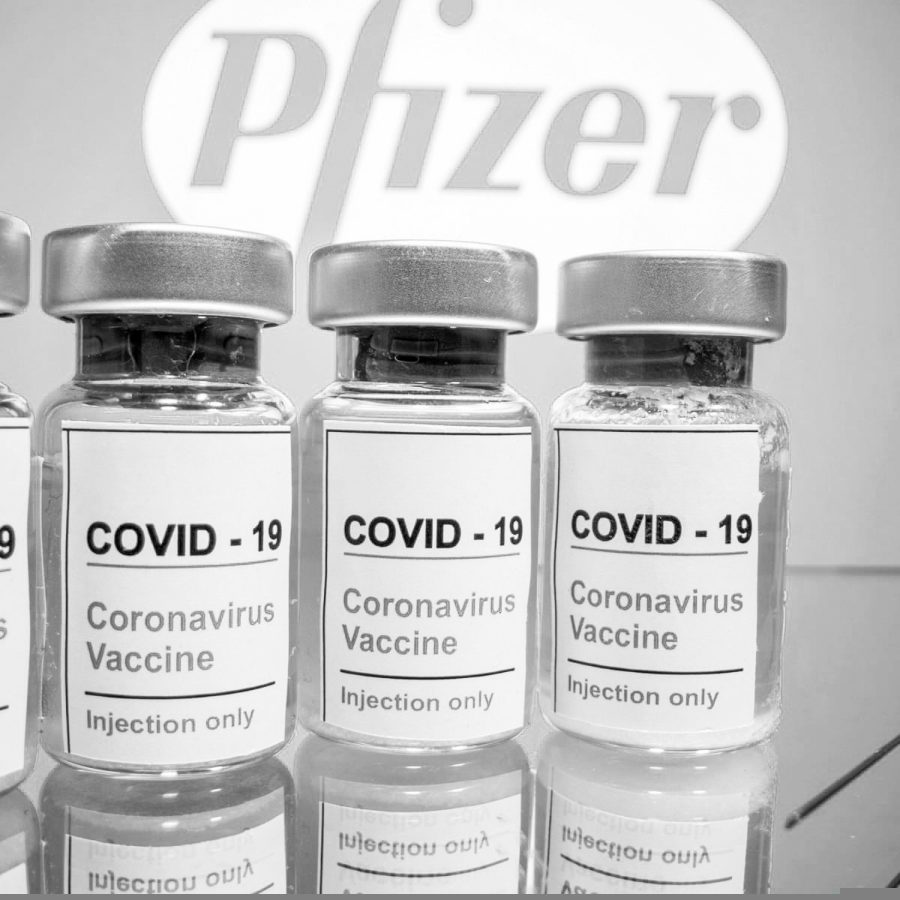An analysis of the Pfizer and Moderna COVID-19 vaccines
Pfizer’s COVID-19 vaccine—reccomended for use by those ages 16 and older according to the CDC—authorized by the FDA
As we have run down the clock—entering the second year of the COVID-19 pandemic—we have made progress in a time of unceasing hopelessness and loss. We have passed the date marking the first COVID-19 case in the United States, yet there is a light at the end of the tunnel; multiple vaccines have been developed and have begun distribution.
Paranoia and mistrust in leadership, as well as in each other, have led to doubts about the legitimacy of the vaccines. Though how could it not, we are all guilty of looking for someone to blame when there are simply no answers. Nonetheless, I choose to put my faith in science—as much of an idiom as that is.
Vaccines assist our immune systems in fighting off illnesses. I like to think of the COVID-19 vaccine as a flu shot—they both teach our bodies to remember that these illnesses need to be fought off by our antibodies. Vaccinations tell our T-lymphocytes and B-lymphocytes to remember how to fight the virus in the future if we are to be infected.
However, it is crucial to remember that it takes time for our bodies to produce T-lymphocytes and B-lymphocytes after we are vaccinated, so it is very possible that, if an individual were to contract COVID-19 right before or right after being vaccinated, they could still become infected since their body did not have enough time to build protection against the virus. That being said, there are currently two vaccines certified and recommended for COVID-19: Pfizer-BioNTech and Moderna.
I like to think of the COVID-19 vaccine as a flu shot—they both teach our bodies to remember that these illnesses need to be fought off by our antibodies.
The Pfizer COVID-19 vaccine is recommended for use by ages 16 and older. It is noted as being 95% effective, with side effects including pain, redness, and swelling around the vaccination site. Otherwise, few people experienced chills, tiredness, and headaches throughout the rest of their bodies within the first few days of the shot.
Side effects that happened within the first seven days are common but are mostly mild-to-moderate according to the Center for Disease Control (CDC). The vaccination consists of two shots, the second is 21 days after the first, in the muscle of the individual’s upper arm.
As far as popularity, the Pfizer vaccine has been talked about the most in the media and just general word-of-mouth. On December 11, 2020, the Food and Drug Administration (FDA) certified and issued emergency response use of the vaccine where at-risk groups of 65 and older would be first priority.
And, although the Moderna vaccine does not get as much coverage, it is still 94.1% effective, making it an almost equal alternative to Pfizer. Side effects experienced align with Pfizer, also, and it consists of two shots that are 28 days apart.
The Moderna vaccine was certified on December 18, 2020, by the FDA for emergency use authorization. Later, it was recommended that the Moderna vaccine be used by individuals 18 years or older.
The bottom line is that getting vaccinated is the only sure way to finally make tangible progress—to push through the COVID-19 pandemic. It is important to protect ourselves, and, of course, others by remaining socially distanced, wearing a mask, and being responsible when it comes to the situation at hand regardless of whether we are vaccinated or not.

Kelsey Dantuma is a senior entering her third and final year on staff for The Central Trend. In all honesty, Kelsey has found a home through writing for...































































































queenie • Feb 14, 2021 at 11:10 am
amazing. i love this, kels!! you do such a great job at breaking down the vaccines in a professional manner, and you really debunk any anti-vax myths/lies:) thank you for posting this in a time where misinformation is easily spread. science trumps all–i love this!
Lisa Dantuma • Feb 11, 2021 at 9:54 pm
Great article on the two COVID vaccines!